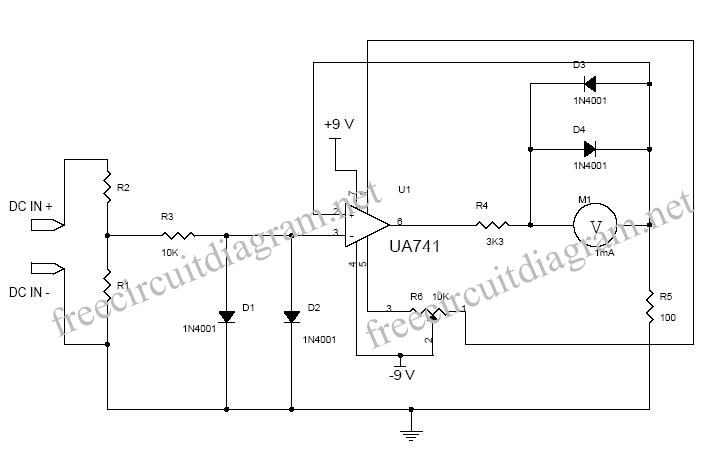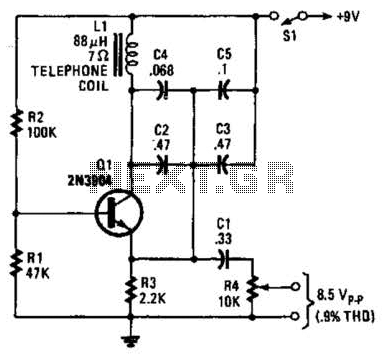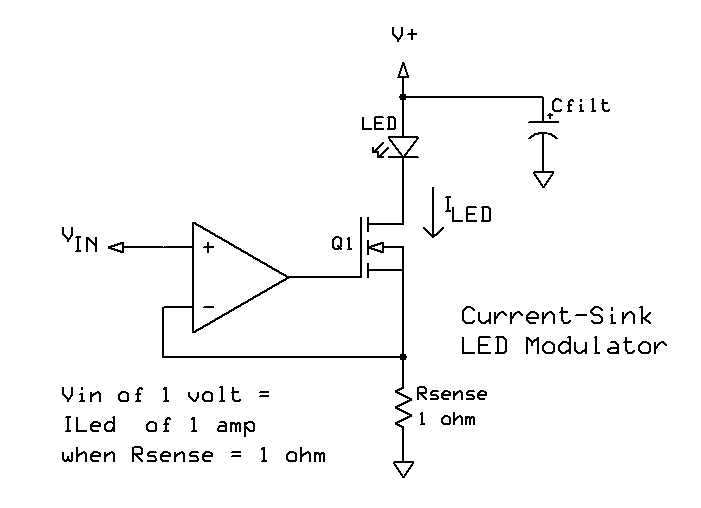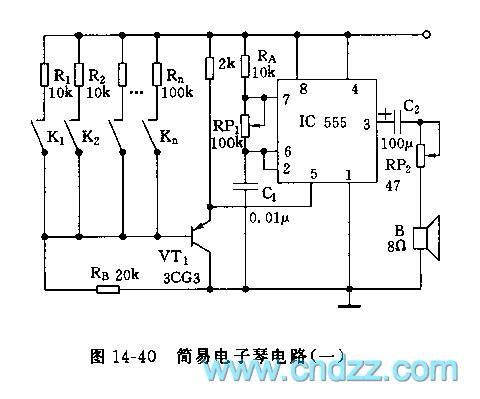
Simple High Impedance DC Voltmeter Using a uA741 Op-amp

This is a circuit diagram designed for high voltage DC impedance. It utilizes the uA741 integrated circuit (IC), which functions as a non-inverting DC amplifier. The circuit incorporates negative feedback through DC meters to achieve a full-scale deflection of 1mA. The working principle relies on the fact that with a resistor (R6) of 100 ohms, the meter will indicate full scale when the input voltage at pin 3 matches the voltage drop across R6, which is 0.1 volts.
The circuit employs the uA741 op-amp, known for its versatility in analog signal processing. In this configuration, the op-amp operates in a non-inverting mode, where the input signal is applied to the non-inverting terminal (pin 3). The feedback mechanism is established through resistor R6, which is crucial for setting the gain and ensuring stability in the circuit operation.
When the input voltage at pin 3 of the op-amp reaches a level that produces a voltage drop of 0.1 volts across R6, the output of the op-amp will drive the connected DC meter to its full-scale reading of 1mA. This characteristic makes the circuit suitable for applications requiring precise measurement of high voltage DC signals.
The circuit design also includes other passive components, such as resistors and capacitors, which may be used to filter noise and stabilize the performance of the op-amp. Proper selection of these components is essential to optimize the frequency response and minimize distortion in the output signal.
In summary, this high voltage DC impedance circuit leverages the capabilities of the uA741 op-amp to provide accurate measurements by utilizing a feedback mechanism that correlates input voltage with a defined output response, making it a valuable tool in various electronic applications.Circuit diagram of this simple in design for high voltage DC Impedance. This is a circuit diagram with circuit design that was built by uA741 IC. IC is the op-amp non-inverting DC amplifier. IC that has a negative feedback through the DC meters need to 1mA full-scale deflection. Working principle of this circuit is a circuit since R6 is 100 ohms, the meter will indicate full scale when the input voltage DC to pin3 is the same as the voltage drop at R6, which is 0.1 volts 🔗 External reference
The circuit employs the uA741 op-amp, known for its versatility in analog signal processing. In this configuration, the op-amp operates in a non-inverting mode, where the input signal is applied to the non-inverting terminal (pin 3). The feedback mechanism is established through resistor R6, which is crucial for setting the gain and ensuring stability in the circuit operation.
When the input voltage at pin 3 of the op-amp reaches a level that produces a voltage drop of 0.1 volts across R6, the output of the op-amp will drive the connected DC meter to its full-scale reading of 1mA. This characteristic makes the circuit suitable for applications requiring precise measurement of high voltage DC signals.
The circuit design also includes other passive components, such as resistors and capacitors, which may be used to filter noise and stabilize the performance of the op-amp. Proper selection of these components is essential to optimize the frequency response and minimize distortion in the output signal.
In summary, this high voltage DC impedance circuit leverages the capabilities of the uA741 op-amp to provide accurate measurements by utilizing a feedback mechanism that correlates input voltage with a defined output response, making it a valuable tool in various electronic applications.Circuit diagram of this simple in design for high voltage DC Impedance. This is a circuit diagram with circuit design that was built by uA741 IC. IC is the op-amp non-inverting DC amplifier. IC that has a negative feedback through the DC meters need to 1mA full-scale deflection. Working principle of this circuit is a circuit since R6 is 100 ohms, the meter will indicate full scale when the input voltage DC to pin3 is the same as the voltage drop at R6, which is 0.1 volts 🔗 External reference




%2Busing%2Bop%2Bamp%2B741%2Bic%2B.png)
